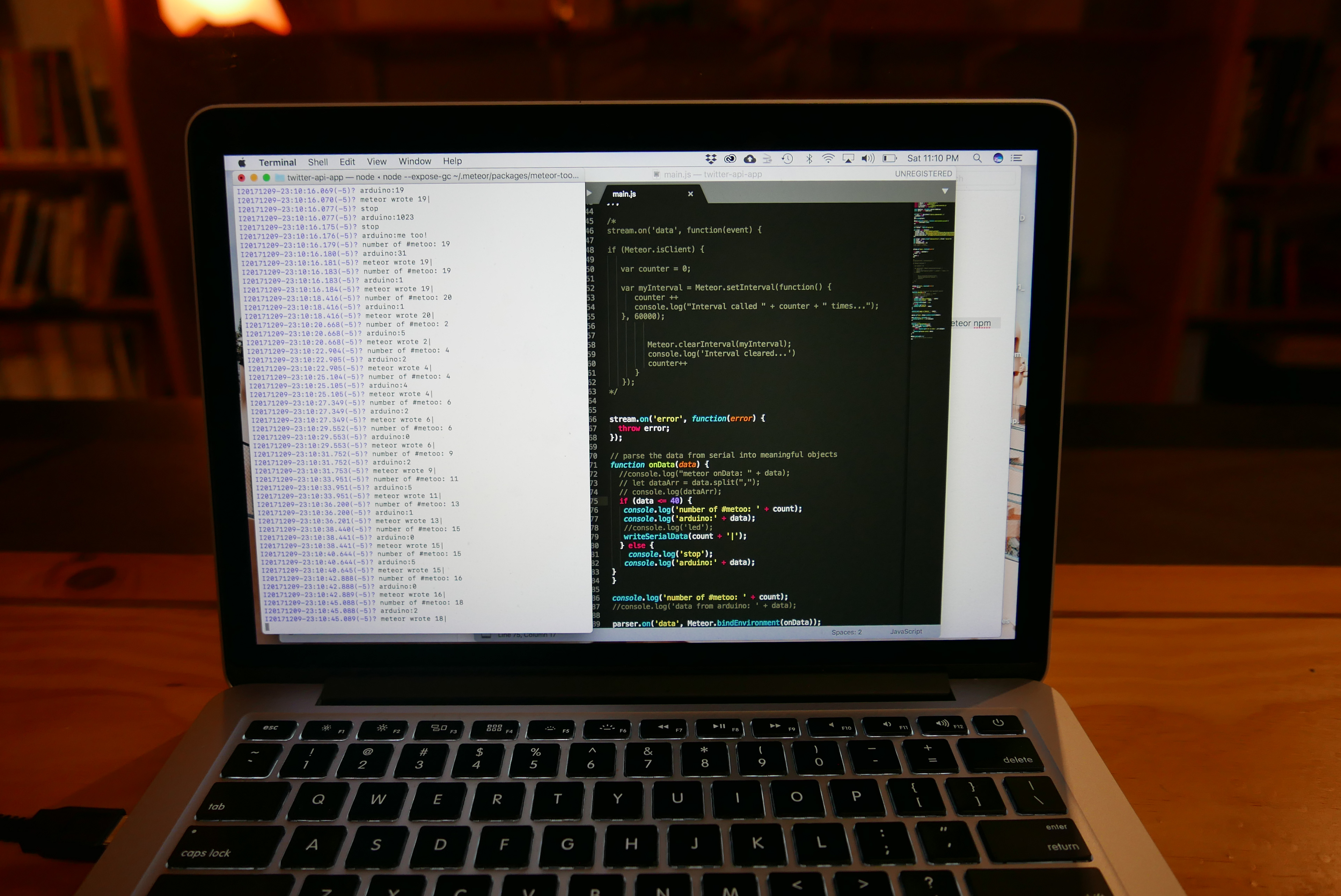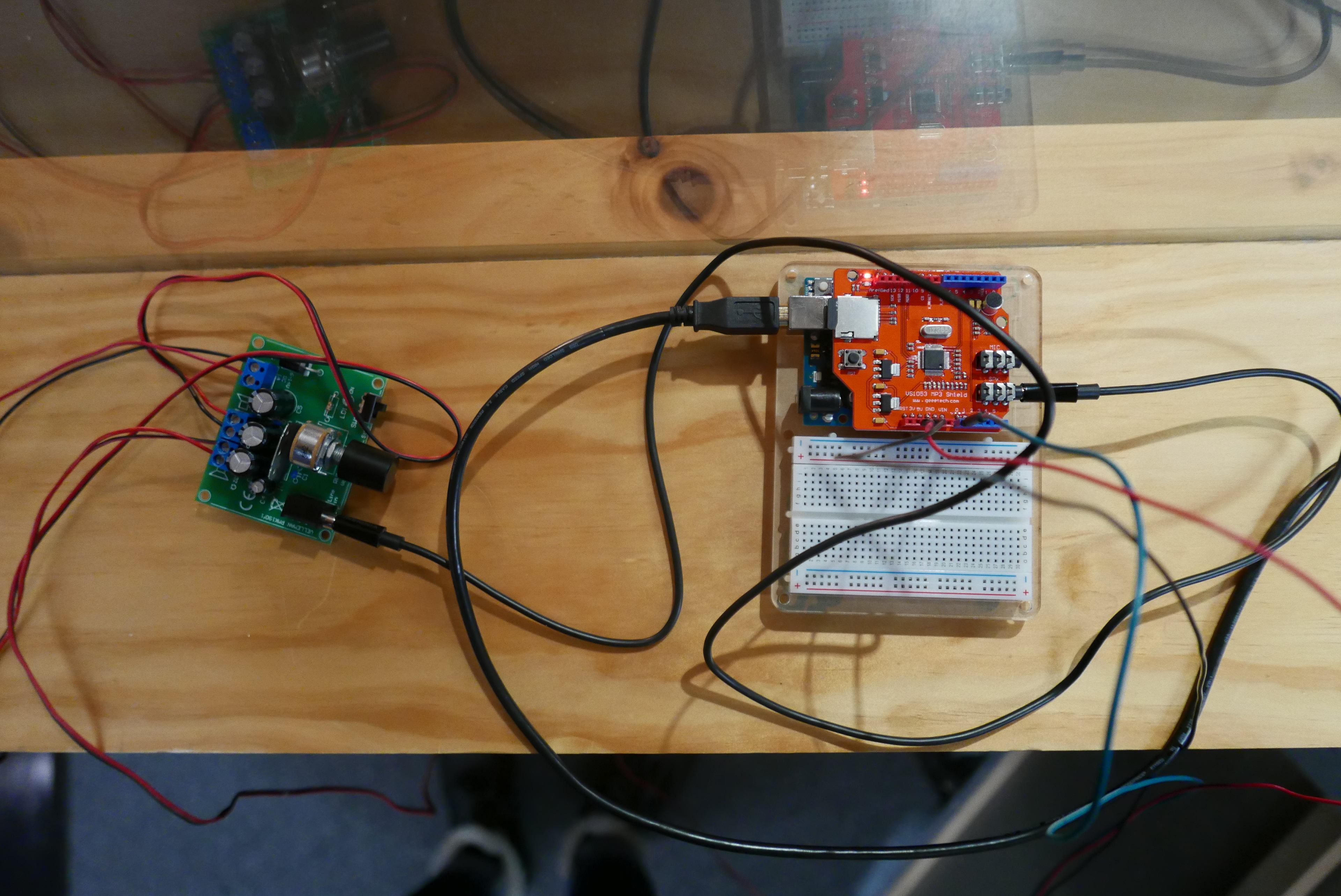#metoo voices is an interactive sound installation representing the Twitter #metoo movement
OVERVIEW
Concept
As a graphic designer, I was always working with the visual representation of data, but I frequently ask myself about the power of those numbers. How might data be visually impressive? How might I express a number with the full impact of its information, especially if this number is related to a voice of protest in a digital network? What is your relationship with a hashtag that you are not tracking, but that might be used by others connected to you? How could I represent the power of a number from a digital community?
In this installation, I wanted to represent the number of women that are using #metoo in twitter as their voice of protest against sexual assault.
Scope
4 weeks
4 weeks
Categories
Physical Computing,
Coding, Prototyping,
UX Design
Physical Computing,
Coding, Prototyping,
UX Design
Collaborators
Kate Styer
Paula Daneze
Kate Styer
Paula Daneze
Tools
Arduino, C++
API
Arduino, C++
API
Advisors
Eric Forman
(Eric Forman Studio),
Bruno Kruse and
Carrie Kengle
(Area of Effect)
Wolfgang Gil
Eric Forman
(Eric Forman Studio),
Bruno Kruse and
Carrie Kengle
(Area of Effect)
Wolfgang Gil


History
In 2006, activist Tarana Burke began the “Me Too” campaign to encourage “empowerment through empathy” in support of women of color, especially in underprivileged communities, who had experienced sexual harassment or assault. Burke believed that survivors could help each other heal by showing each other that they were not alone, that there were other people who had gone through it, too.
In October 2017, on the social media platform Twitter, actress Alyssa Milano used the words “me too” as a hashtag in a tweet in a response to multiple women coming forward to share their experiences of sexual assault committed by Hollywood producer Harvey Weinstein, and encouraged others to use the hashtag too. The hashtag exploded – it was used more than 1.7 million times within just a few days by users sharing their personal experiences with sexual assault.
Interaction
Using Twitter’s API, the installation counts how many times the hashtag #metoo has been tweeted or retweeted. When a participant says “Me too!” into the megaphone, the installation counts the number of instances of the hashtag has been used in the last minute and plays recordings of people saying “Me too!” in that number.
Using Twitter’s API, the installation counts how many times the hashtag #metoo has been tweeted or retweeted. When a participant says “Me too!” into the megaphone, the installation counts the number of instances of the hashtag has been used in the last minute and plays recordings of people saying “Me too!” in that number.
#metoo voices creates a physical representation of the #metoo movement by transforming words on a screen into human voices. It also emulates the experience of sharing a painful story and knowing immediately that you are not alone.
Components
#metoo voices is built with the following components:
• Sound detection sensor module
• Arduino
• Music Maker MP3 shield for Arduino
• 8 ohm speakers
• Amplifier module
• Meteor JavaScript web framework written using Node.js
• Twitter API
How it works
1. The sound detection sensor module reads the volume of sound from the megaphone when a user says “me too”, per a threshold set in our Arduino code.
2. When that threshold is met, the value is sent to our Meteor app, which is connected to Twitter’s API and tracking instances of the #metoo hashtag.
3. When the value is received, the app counts how many times it has been used in the last minute, then sends that value back to Arduino.
4. Arduino then plays pre-recorded files of anonymous voices saying “me too” in that value.


NEXT STEPS
After feedback from Eric Forman and Luisa Pereira (ITP Research Fellow), we want too:
• Using voice recognition code to trigger the Twitter’s API only when metoo is said
• Using multiple sound channels to empower the experience of many voices saying metoo simultaneity. Also, it will allow using many spreadly speakers.